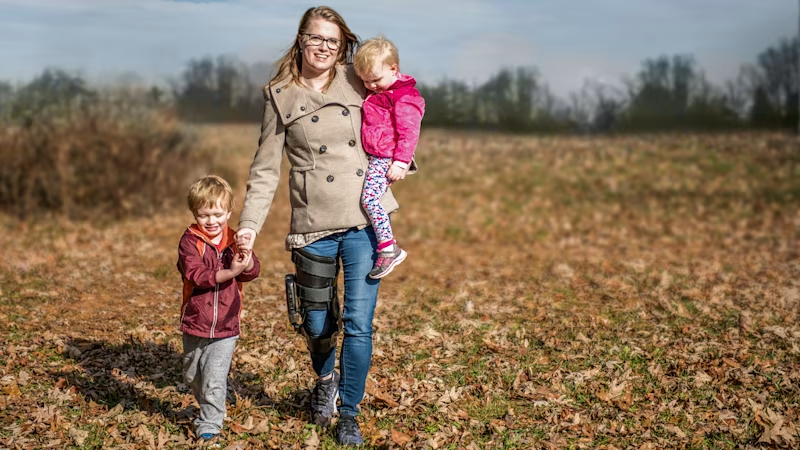Espina bífida (columna vertebral abierta)
La espina bífida (columna vertebral abierta) es una malformación en la zona de la columna vertebral y la médula espinal que se produce al inicio del embarazo. Puede resultar beneficioso un tratamiento con medios auxiliares ortopédicos como, p. ej., órtesis.
Causes, symptoms and treatment
Spina bifida (open back) is a defect in the area of the spine and spinal cord. Since the spine and spinal cord develop from what is known as the embryo’s neural tube, spina bifida is classified as a neural tube defect. Neural tube defects are the second most common congenital malformations after heart defects. An open back occurs more frequently in the area of the lumbar spine and sacrum than in the thoracic spine or cervical spine regions.
Spina bifida occurs in various forms and degrees of severity:
Open spina bifida (spina bifida aperta)
Hidden spina bifida (spina bifida occulta)
Órtesis y correajes de Ottobock

Causas
Aún no se ha logrado explicar con exactitud las causas de la espina bífida. De lo que no hay lugar a dudas es de que la malformación de la columna vertebral se produce durante la tercera o cuarta semana de gestación. Esto se debe a que el tubo neural del embrión no se cierra. El tubo neural es una fase temprana en el desarrollo del sistema nervioso central. A partir de la sección inferior del tubo neural se desarrolla la médula espinal y la columna vertebral, mientras que la sección superior da lugar al cerebro y al cráneo.
Un déficit de ácido fólico (una vitamina B) o un metabolismo del ácido fólico alterado durante el embarazo se consideran la causa más importante de la espina bífida. Además, las mujeres que toman antiepilépticos durante el embarazo tienen un riesgo aproximadamente 1 % mayor de que su bebé desarrolle espina bífida.
Symptoms
The symptoms can vary considerably. The exact location of the fissure determines whether the malformation affects the spine and to what extent. Spina bifida occulta is entirely asymptomatic in some cases. In this case, the vertebral arch is split in two but the spinal cord is not involved. The malformation remains undetected as a result. On the other hand, an open back – where the spinal cord meninges (membranes) and/or the spinal cord itself are involved in the fissure – can have mild to severe effects. This is called spina bifida aperta, and the symptoms range from barely noticeable complaints to considerable limitations such as paraplegia.
Therapy
Therapy depends on the severity of the spinal malformation. In some cases, no treatment of any kind is required for the minor form of the malformation. With spina bifida aperta, on the other hand, the defect may be significant. Surgery within 48 hours after birth is advisable in this case. Therapy including physiotherapy and orthopaedic devices such as orthoses can be helpful in counteracting joint deformations as a consequence of spina bifida.
Volver a la vida cotidiana: en 3 pasos hasta la órtesis de Ottobock
- Aquí encontrará un resumen de las órtesis y correajes que pueden ser adecuados para usted. Lleve consigo esta lista la próxima vez que acuda al médico.
- Consulte a su médico cuál de las órtesis es la más adecuada para su cuadro clínico. Seguidamente, su médico le extenderá una receta para la órtesis correspondiente.
- Acuda con la receta a una ortopedia. Allí recibirá su nueva órtesis después de haberse adaptado con precisión a sus medidas corporales.
